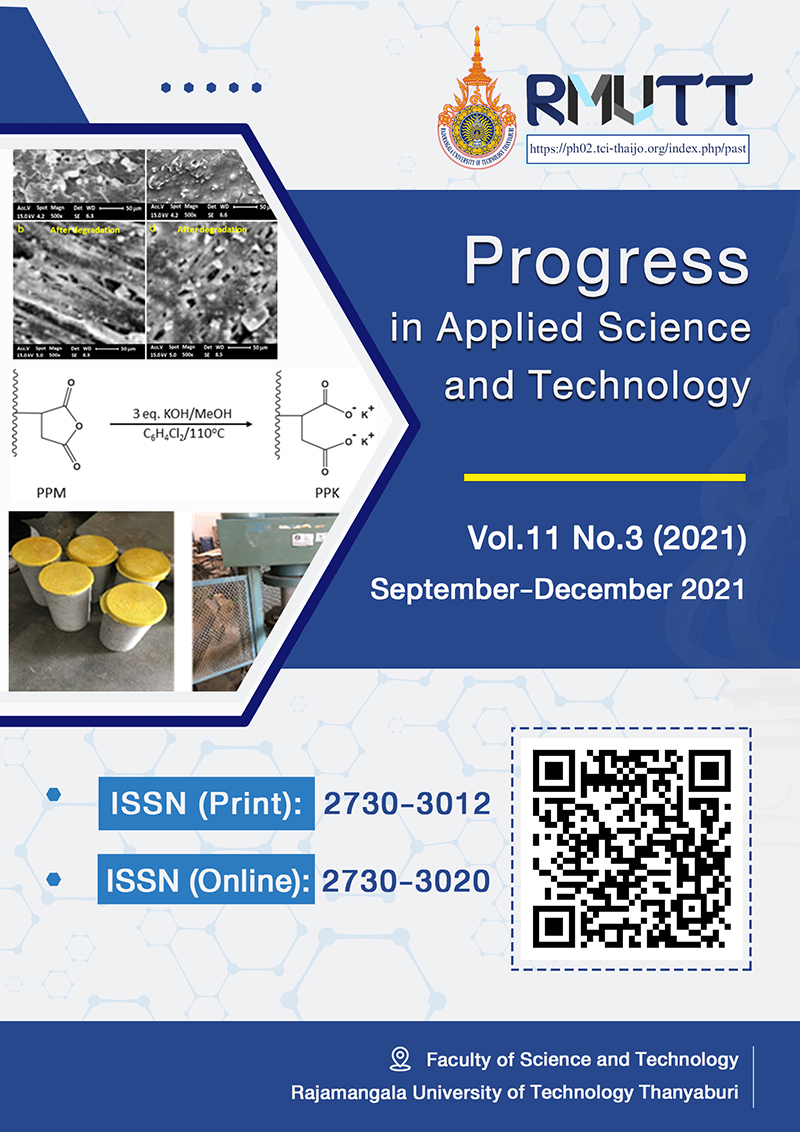Development of Application Supports Learning on Smartphone by Augmented Reality Technology Using KWL Activity for Higher Education Institution in Thailand
Main Article Content
Abstract
Recently, there has been a proliferation of education technology practices, based on the application of active teaching and learning processes using Augmented Reality technology. The purposes of this research are: 1) to development the application supports learning on smartphone by augmented reality technology using KWL (Know-Want-Learn) activity; 2) to evaluate the effectiveness of the application supports learning AR with KWL activity; and 3) to compare students’ learning achievement between pretest and posttest of the students learning through this application. This type of research is experimental research with one group pretest - posttest design. The samples used in the experiment is 46 students at Bachelor of Arts in Information Studies, Faculty of Humanities, Srinakharinwirot University, Thailand, selected by using purposive sampling method. The instruments used in this study were using application supports learning on computer programming in information work class, efficiency analytic of an application, learning achievement test and satisfaction questionnaires. The satisfaction used in the analysis were percentage, mean, standard deviation and t-test assisted by SPSS and descriptive statistics. The results of the study showed that the Application in design side was in the highest level of the quality with mean (x̅) of 4.68 and standard deviation (S.D.) of 0.15. The student has the posttest score significantly higher than the pretest score (p <.001). This study investigates the effectiveness of AR application learning materials and using KWL in terms of learning performance, motivation, attitude, and behavior towards different methods of learning. Our activity results favor AR application learning techniques where students’ learning motivation and performance are enhanced compared to the non- AR application learning methods. Majority of the students reported higher satisfaction on learning though application. Suggestions and comments from students revealed that using Application, students will be able to independently learn and self-test their learning at their own convenience. Instructors can use the application to provide additional study aids for the students. The Application, which is being developed as a pilot project, will be expanded, and applied as a learning tool for education.
Article Details

This work is licensed under a Creative Commons Attribution-NonCommercial-NoDerivatives 4.0 International License.
References
Dufva, T.; Dufva, M. Grasping the future of the digital society. Futures 2019, 107, 17–28.
Das, K. The role and impact of ICT in improving the quality of education: An overview. Int. J. Innov. Stud. Sociol. Humanit. 2019, 4, 97–103.
Dunleavy, M., Design principles for augmented reality learning. Tech Trends 58(1) 2014., 28-34.
G. Kipper and J. Rampolla., Augmented Reality: An Emerging Technologies Guide to AR. Waltham: Elsevier, 2013.
Holden, C., Homegrown augmented reality. TechTrends, 58(1) 2014., 42-48.
Chang, H., Lee, S. W., Liang, J. C., & Wu, H. K., Status, opportunities, and challenges of augmented reality in education. Computers & Education. 62, 2013., 41-49. DOI: http://10.1016/j.compedu.2012.10.024
Bustami Usman,Teaching Reading Through KNOW-WANT-LEARNED(KWL) STRATEGY: The effects and benefits, in: Englisia: Journal of Language, Education, and Humanities Vol 6, No 1, 2018., pp. 35-42 DOI: http://dx.doi.org/10.22373/ej.v6i1.3607
Fitz-Gibbon. carol Taylor. Lyons Morris and Lynn. ji.auth. How to design a program evaluation. Newbury Park : Sagh., 1987
Akçayır, M., & Akçayır, G. Advantages and challenges associated with augmented reality for education: A systematic review of the literature. Educational Research Review 2017., 20, 1–11.
Anderson, L. W., Krathwohl, D. R., Airasian, P. W., Cruikshank, K. A., Mayer, R. E., Pintrich, P. R., ... & Wittrock, M. C. A Taxonomy For Learning, Teaching, and Assessing: A Revision Of Bloom’s Taxonomy of Educational Objectives, Abridged Edition. White Plains, NY: Longman,.2001
W. Handayani, W. Setiawan, P. Sinaga, A. Suhandi, Translation among modes of representation by pre-service physics teacher on magnetic force on particle concept Translation among modes of representation by pre-service physics teacher on magnetic force on particle concept, in: Journal of Physics: Conference Serise, vol. 1157, IOP Publishing, Bristol, 2019, pp. 1-7 DOI: http://doi.org/10.1088/1742-6596/1157/3/032058
H. Hermansyah, G. Gunawan, L. Herayanti, Pengaruh Penggunaan Laboratorium Virtual Terhadap Penguasaan Konsep dan Kemampuan Berpikir Kreatif Siswa pada Materi Getaran dan Gelombang, Jurnal Pendidikan Fisika dan Teknologi 1(2),.2017, 97-102. DOI: http://doi.org/10.29303/jpft.v1i2.242
Poux, F.; Valembois, Q.; Mattes, C.; Kobbelt, L.; Billen, R. Initial User-Centered Design of a Virtual Reality Heritage System: Applications for Digital Tourism. Remote Sens. 2020, 12, 2583.
Applications for Digital Tourism. Remote Sens. 2020, 12, 2583. [CrossRef] 2. Quintero, J.; Baldiris, S.; Rubira, R.; Cerón, J.; Velez, G. Augmented reality in educational inclusion. A systematic review on the last decade. Front. Psychol. 2019, 10, 1835.
Hantono, B.S.; Nugroho, L.E.; Santosa, P.I. Meta-review of augmented reality in education. In Proceedings of the 2018 10th International Conference on Information Technology and Electrical Engineering (ICITEE), Bali, Indonesia, 24–26 July 2018.
Salar R., Arici F., Caliklar S., Yilmaz R.M. A Model for Augmented Reality Immersion Experiences of University Students Studying in Science Education. J. Sci. Educ. Technol. 2020:1–15. doi: 10.1007/s10956-019-09810-x.
Flores-Bascunana M., Diago P.D., Villena-Taranilla R., Yañez D.F. On Augmented Reality for the Learning of 3D-Geometric Contents: A Preliminary Exploratory Study with 6-Grade Primary Students. Educ.Sci. 2020;10:4. doi: 10.3390/educsci10010004.
Vasilevski N., Birt J. Analysing construction student experiences of mobile mixed reality enhanced learning in virtual and augmented reality environments. Res. Learn. Technol. 2020;28:1–23. doi: 10.25304/rlt.v28.2329.






